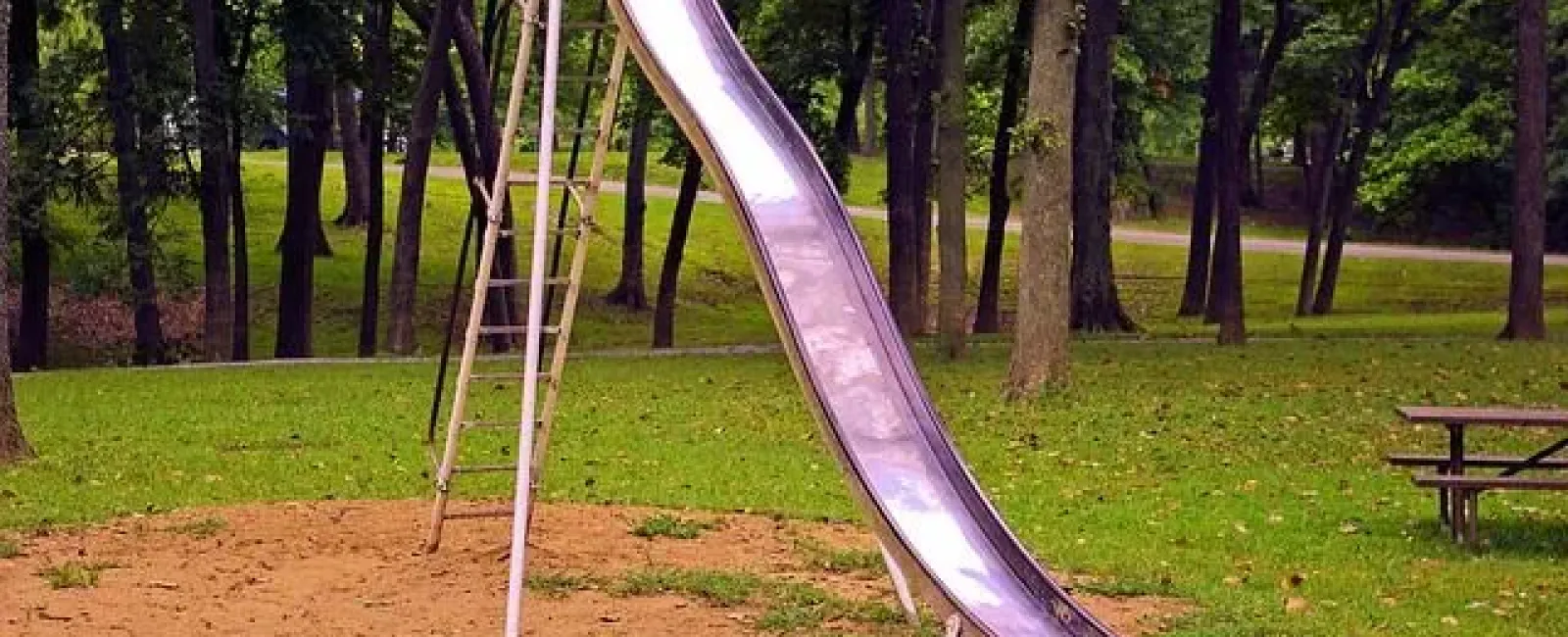Now that warmer weather is just around the corner, many communities are preparing for pool season and other outdoor activities at their amenities centers. It's time for folks to start using the tennis courts, for families to take more walks together, and for children to start using the community's playground. Hopefully your community playground doesn't resemble the picture below. If it does, act now!
Over 200,000 children each year are treated in the emergency room due to playground-related injuries! Before you let the children in your care play on a public or private playground, we recommend conducting a brief visual inspection of equipment, safety surfacing, and age-appropriate design. Below are some actions that you can take to make sure that the children in your care are playing in a safe play area.
Equipment
First, check for broken or worn-out play equipment. If a piece of equipment is damaged, we recommend immediately alerting the party responsible for maintaining the play area. A few common pieces of broken equipment that we see on site visits include frayed ropes, busted panels, and gashes/rust in metal components.
Next, check for missing hardware or loose hardware such as bolts, lags, and nuts. If the hardware is missing or loose, the play component associated with the hardware is probably not operationally safe.
Finally, inspect and identify any areas that have gaps that could potentially cause head or neck entrapment. A child's head comprises a substantially larger portion of their anatomy than an adult's head on an adult body. Because of the size of a child's head relative to their body, a body may be able to fit through an opening, but the head may get stuck resulting in head entrapment.
Safety Surfacing
A playground without proper impact attenuating safety surfacing presents a huge risk to children. According to the National Safety Council (NSC), roughly 80% of injuries on playgrounds are caused by falls. When a child falls on a hard surface without the proper safety surfacing, the likelihood that they become seriously injured increases significantly.
If the safety surfacing consists of loose-fill mulch, make sure that it is compacted and that there is plenty of it to cushion a fall. We recommend 12 inches of loose-fill mulch, which typically gets compacted to about 9 inches. If the playground has a unitary safety surface like rubber or turf, make sure that there are no cracks or breaks. If there isn't any safety surfacing and the ground consists of dirt and rocks…run the other way!
Age-Appropriate Design
The Consumer Product Safety Commission (CPSC) and the National Program for Playground Safety both recommend providing separate areas for ages 2-5 and ages 5-12. However, due to area restrictions and budget constraints, having two separate areas is not always possible. When kids of all ages are playing on the same play structures, make sure all of the equipment is age appropriate for all of the intended users and that each of the elevated platforms has barriers or guardrails to prevent children from falling off. We also recommend identifying pieces of equipment that may be used in ways other than the ways in which the manufacturer intended. For example, some children like to climb on roofs and onto the outside of tube slides. While this behavior can't always be prevented, identifying the possibility of the behavior will allow you to react quickly.
For anyone who is considering conducting a playground safety inspection themselves instead of hiring a Commercial Playground Safety Inspector (CPSI), we recommend utilizing the following links to build a safety checklist.
https://www.cpsc.gov/safety-education/safety-guides/playgrounds/public-playground-safety-checklist
https://playgroundsafety.org/sites/default/files/2018-11/npps-report-card.pdf
